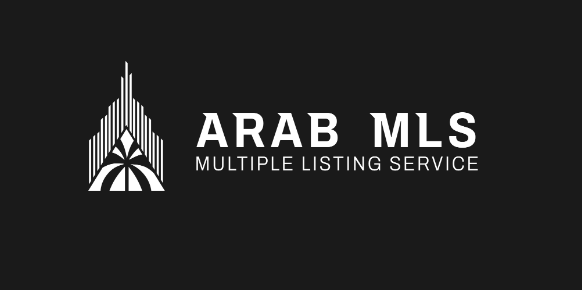The rise of remote work—accelerated dramatically by the COVID-19 pandemic—has fundamentally altered the real estate landscape. As millions of professionals shifted to working from home, their housing preferences changed, directly influencing supply, demand, and listing characteristics on Multiple Listing Services (MLS).
This article explores how the remote work revolution has reshaped MLS listings across the United States, with emphasis on location trends, home features, pricing dynamics, and market segmentation.
A Shift in Buyer Preferences
Prior to the remote work boom, homebuyers often prioritized proximity to urban centers and workplaces. However, the newfound flexibility to work from anywhere prompted many to reevaluate their living arrangements. Buyers began seeking larger homes, more outdoor space, and dedicated home office areas—features previously considered luxuries or afterthoughts.
MLS data reflects this shift. Keywords like “home office,” “flex space,” and “high-speed internet” have surged in listing descriptions. According to Zillow and Redfin reports from 2021 to 2024, listings that mention “home office” sold faster and, in some cases, at a premium compared to those that did not.
Additionally, the demand for suburban and rural properties increased, leading to a geographic redistribution of MLS listings. Traditional urban strongholds saw slower growth or even declining demand, while exurbs and smaller cities experienced surging interest. This trend has reshaped how and where real estate agents list and market homes.
Location Decentralization and MLS Activity
The decentralization of work prompted a population migration away from expensive urban markets like San Francisco, New York City, and Los Angeles toward more affordable regions such as Boise, Austin, and parts of the Southeast and Midwest. MLS data shows a noticeable increase in listings and transactions in previously low-volume markets.
This migration has created a more distributed MLS ecosystem, where regional listing services that once operated at modest volumes have seen substantial growth. Conversely, major metropolitan MLS platforms have had to adapt to lower inventory turnover and shifting buyer profiles.
Moreover, remote work has encouraged some households to purchase second homes, turning vacation destinations into year-round living options. Coastal towns, mountain retreats, and other scenic locations are now featured prominently on MLS platforms, often with a focus on remote work readiness.
Home Features Redefined
Remote work hasn’t only changed where people want to live, but how they want their homes to function. Listings now emphasize features that support productivity, comfort, and connectivity:
-
Home Offices: Once a niche addition, dedicated workspaces have become essential. MLS listings increasingly highlight multiple offices or convertible rooms.
-
Broadband Access: Reliable internet is no longer optional. MLS fields and descriptions now routinely include details on fiber-optic availability or broadband speed.
-
Outdoor Space: Patios, decks, and gardens are in high demand, with listings emphasizing privacy, relaxation, and recreation.
-
Flexible Layouts: Open floor plans are giving way to more compartmentalized spaces, allowing multiple household members to work or study without disruption.
These evolving preferences have led agents to adjust the way they write listing descriptions and highlight property attributes on MLS systems.
Price Volatility and Affordability Concerns
The influx of remote workers into smaller markets has driven up home prices in many areas, in some cases outpacing local wage growth. This trend has made affordability a key concern, particularly in formerly budget-friendly regions. MLS platforms have recorded increased competition in these markets, with multiple-offer situations and cash buyers becoming more common.
At the same time, demand has softened in some high-cost urban areas, resulting in longer days on market (DOM) and price reductions. Agents in these regions are leveraging MLS tools to refine pricing strategies and highlight incentives like seller credits or reduced closing costs.
As price dynamics shift, MLS analytics are increasingly used by brokers and agents to study migration trends, buyer behavior, and optimal pricing strategies in a post-pandemic world.
Implications for Real Estate Professionals and MLS Platforms
The remote work trend has not only influenced what is listed on MLS but also how agents interact with the platform. With buyers often relocating across states, agents must collaborate across MLS boundaries or rely on national aggregators like Realtor.com and Zillow. In response, many regional MLS organizations are moving toward data-sharing partnerships and broader interoperability.
Agents are also adopting virtual tools at an unprecedented rate. Virtual tours, 3D walkthroughs, drone photography, and remote closings have become standard practices. These tools are now commonly integrated into MLS listings, reflecting a more tech-driven approach to home buying and selling.
Training and education have become paramount. Agents need to understand how to market properties to remote workers, price homes in fluctuating markets, and use data analytics tools embedded in MLS platforms to stay competitive.
Looking Ahead: The Long-Term Impact
The permanence of remote work remains an open question. While some companies have adopted fully remote or hybrid models indefinitely, others are encouraging a return to the office. Nevertheless, the psychological and structural changes brought by remote work are unlikely to fully reverse.
As remote and hybrid work remain viable for a large segment of the workforce, MLS listings will continue to reflect these preferences. Buyers will seek homes that serve as both personal and professional havens, and real estate professionals will need to tailor their services accordingly.
We may also see more customization in MLS platforms themselves. Expect innovations like filtering by internet speed, zoning for home businesses, and commute-free living indexes to become standard. These changes will allow MLS platforms to serve a more mobile and selective buyer demographic.
Multiple Listing Services Software Providers
Real estate professionals depend on Multiple Listing Services Software Providers to deliver the technology that powers MLS platforms. Their tools keep listings accurate and transactions streamlined.
Global leaders such as CoreLogic Matrix MLS, Black Knight Paragon, FBS Flexmls, Rapattoni, and Bridge Interactive provide IDX, reporting dashboards, and mobile functionality.
In the Middle East and North Africa, ArabMLS is rolling out localized systems, including Egypt MLS, Dubai MLS, Saudi MLS, Qatar MLS, and Bahrain MLS. Each adapts global MLS models to regional realities.
This builds credibility, efficiency, and transparency across the property sector.
Conclusion
Remote work has had a profound and lasting effect on the housing market, and MLS listings offer a clear window into these changes. From location shifts and price volatility to evolving home features and tech-driven marketing, the impact is visible across the real estate value chain. As remote work continues to influence how and where people live, real estate professionals must remain agile—ready to adapt MLS strategies to a new era of flexibility and digital-first home buying.
Frequently Asked Questions
How has remote work influenced where people are buying homes?
Remote work has significantly expanded the geographic flexibility of homebuyers. Without the need to commute daily to urban offices, many professionals have chosen to move to suburban, rural, or less expensive regions. This trend has led to population shifts away from high-cost metropolitan areas like San Francisco, New York, and Los Angeles, toward smaller cities and towns such as Boise, Nashville, and Asheville. On MLS platforms, this is reflected by increased listing activity, higher competition, and rising home values in previously low-demand areas.
What keywords or features are becoming more common in MLS listings due to remote work?
With more buyers prioritizing work-from-home capabilities, MLS listings now frequently highlight features like:
-
Home office or flex rooms
-
High-speed internet/fiber connectivity
-
Quiet neighborhoods
-
Large backyards or outdoor living areas
-
Finished basements or converted garages for workspace
Listings that include these keywords often receive more attention and sell faster. Agents are adapting by optimizing property descriptions and using media (like virtual tours) to emphasize these features.
Are certain property types more desirable for remote workers?
Yes. Remote workers tend to favor properties that support both living and working needs. This includes:
-
Single-family homes with additional square footage for offices
-
Properties with separate entrances or guest houses (ideal for client meetings or side businesses)
-
Homes in quiet, nature-rich settings offering a better work-life balance
In contrast, small condos or urban apartments without flexible space have seen reduced demand among remote-first buyers.












